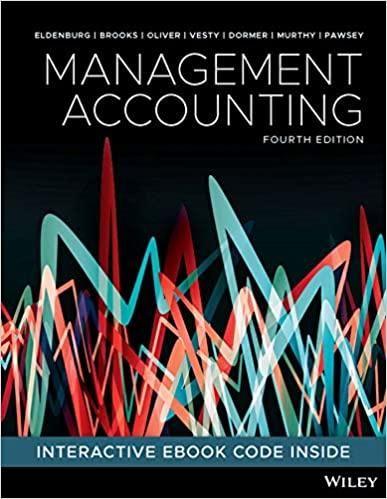Energy plays an important role in improving peoples lifestyles. In Australia, our energy consumption is growing and
Question:
Energy plays an important role in improving people’s lifestyles. In Australia, our energy consumption is growing and is forecasted to increase by 50 per cent over the next 15 years. The available power resources in Australia (currently 80 per cent coal-fuelled) will not cope with the increasing demands. Further investment opportunities are required for long-term power supply, and options are currently being investigated by governments. Due to Australia’s high greenhouse gas emissions from the current coal-fired power plants, some have advocated for nuclear energy as the optimal ‘clean’ power alternative. Australia exports up to 10 000 tonnes of uranium per year (enough to supply more than twice its annual electricity needs), but has not yet used uranium to fuel its own energy industry. The adoption of nuclear power generation could reduce greenhouse gas emissions by one-fifth, and supply electricity to a third of the country. Any decision to invest in nuclear power is deemed politically sensitive. Nuclear power generation would require adopting world’s best practice to prevent unsafe reactor designs and minimise environmental risks.
An Australian study found that accurate capital budgeting and subsequent cost control is a major factor in determining the successful provision of environmentally clean and cheap electricity in Australia. The report detailed the history of costing issues faced by nuclear power plant investors around the world. The most significant implementation problems relate to design flaws and licensing delays (for example, the Shoreham plant in Long Island, New York State, cost $5 billion to build and was never allowed to operate). Subsequent operational costing issues highlighted in the report were as a result of inadequate operator training and non-uniform designs that prevented the achievement of economies of scale in output volume.
The study provided a breakdown of the history of costs relating to nuclear power plant employment. In general, the costs consist of the:
• Construction costs of building a plant with 1 GW capacity (approximately $1000 per kW)
• Operating costs of running the plant and generating energy (approximately 1.3 cents per kW-hour)
• Cost of waste disposal from the plant (approximately 0.2 cents per kW-hour)
• Cost of decommissioning the plant (approximately 10 per cent of construction costs).
According to the report, construction costs are difficult to quantify but estimates provided have been based on worldwide examples. Construction timeframes were estimated to be around three years to completion and commencement of operations. Part of the operating cost estimates includes the raw material (uranium ore) costs, which are approximately 0.05 cents per kW-hour. The costs provided were based on a 40-year plant lifetime with discount interest rates of around 5 per cent.
If the proposed capital budgeting scenario lives up to its promises, the study concludes that nuclear power will provide cheaper electricity than any fossil-fuel-based generating facility in Australia.
While the investment analysis might suggest nuclear power is a financially worthwhile investment for Australia, it is important to note that the final decision to invest in a project such as this one will depend on many other qualitative factors, including stakeholder acceptance.3
Required
(a) Identify the key qualitative factors that would need to be considered in any investment decision relating to nuclear power.
(b) How might these qualitative factors be incorporated into a decision model?
Step by Step Answer:

Management Accounting
ISBN: 9780730369387
4th Edition
Authors: Leslie G. Eldenburg, Albie Brooks, Judy Oliver, Gillian Vesty, Rodney Dormer, Vijaya Murthy, Nick Pawsey





